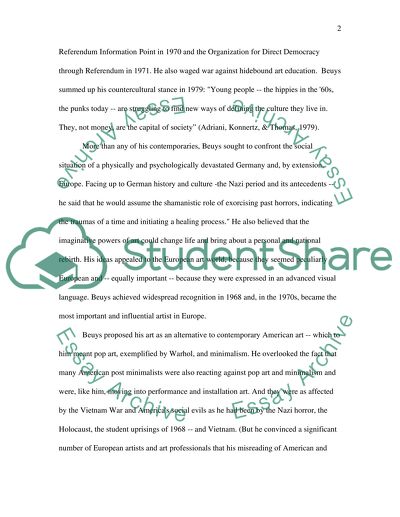Cite this document
(“Beuys Essay Example | Topics and Well Written Essays - 3000 words”, n.d.)
Beuys Essay Example | Topics and Well Written Essays - 3000 words. Retrieved from https://studentshare.org/architecture/1524129-beuys
Beuys Essay Example | Topics and Well Written Essays - 3000 words. Retrieved from https://studentshare.org/architecture/1524129-beuys
(Beuys Essay Example | Topics and Well Written Essays - 3000 Words)
Beuys Essay Example | Topics and Well Written Essays - 3000 Words. https://studentshare.org/architecture/1524129-beuys.
Beuys Essay Example | Topics and Well Written Essays - 3000 Words. https://studentshare.org/architecture/1524129-beuys.
“Beuys Essay Example | Topics and Well Written Essays - 3000 Words”, n.d. https://studentshare.org/architecture/1524129-beuys.


